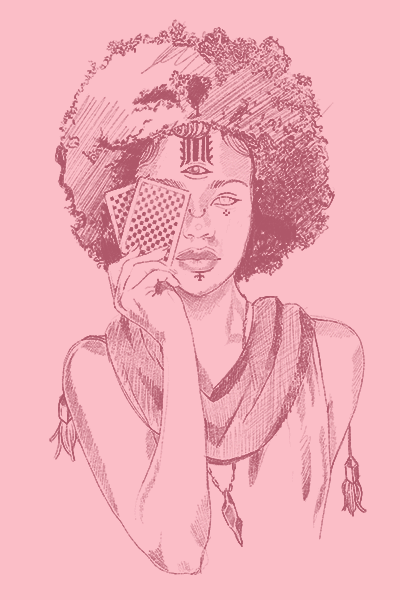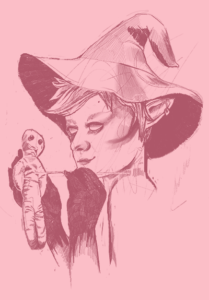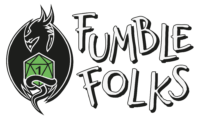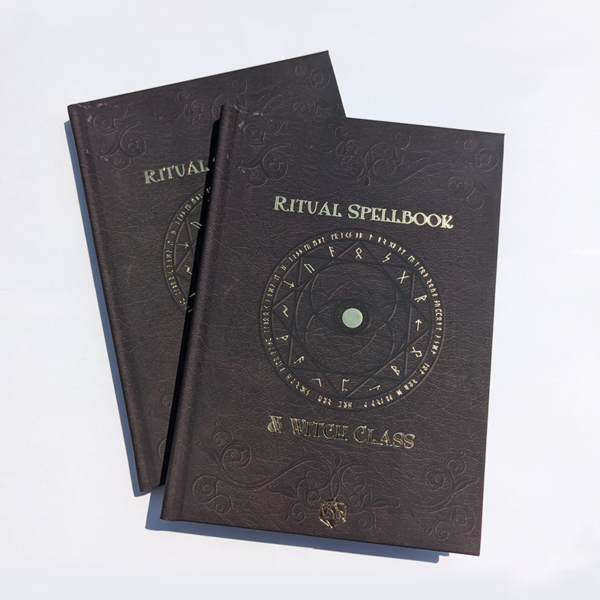The Witch Class for Fifth Edition Dungeons and Dragons
Dungeons & Dragons have yet to include an official witch class for fifth edition. The closest is the druid, which is loosely based on the Celtic shaman, and the pact of the tome warlock. Players have been combining features from different classes in order to create a witch in D&D for years. But what about at lower levels? And what about the fun lore and abilities that come with being a dedicated witch?
You may have heard us rave about our own version of the witch class on social media, or come across our Ritual Spellbook & Witch Class for 5e in our store. But I wanted to delve into the specifics of the witch class and all the cool features that come with it.
Hopefully by the end of this blog post you will have been convinced to play the witch in your campaigns. Likewise, if you’re the Dungeon Master, you’ll feel comfortable enough to let your players become a witch in your story.
What makes our witch class different from other homebrew witches?
 Before the Kickstarter went live, we spent months researching real-life witches and everything to do with witchcraft. This included the different types of witches and their practices, religions and the cultures of witches around the world and throughout history, divination techniques, rituals, spells and more. We also consulted with practising witches to ensure we were respectful, factual, and not appropriating in any way.
Before the Kickstarter went live, we spent months researching real-life witches and everything to do with witchcraft. This included the different types of witches and their practices, religions and the cultures of witches around the world and throughout history, divination techniques, rituals, spells and more. We also consulted with practising witches to ensure we were respectful, factual, and not appropriating in any way.
With all this in mind, we created a witch class that feels real and genuine. Players can feel a connection with their spiritual side, and practising witches can play a version of themselves in the roleplaying game they love.
What is the witch and how does it fit into dungeons & dragons?
Our witch class is a cross between the druid and wizard classes, with a little warlock thrown in.
The witch very much has a druidic feel to it. Their magic comes from an innate ability passed down through generations, as well as a connection to the natural world. However, much like a wizard, they must hone their skills, practise their crafts, and learn how to perform rituals in the correct way. They get access to the druid and witch spell lists, which include wizard and cleric spells for versatility.
(Note: we gave them access to the druid list because of the legal limitations of only using spells from the SRD in 3rd party content)
The Mechanics
Unlike the druid, witches get a lower number of instant-cast spells that they learn every level. Additionally, they are able to copy ritual spells into their spellbooks like wizards can with their spells. They must have this ritual spellbook open when they are casting ritual spells, and they must have the material components at hand, otherwise the spells won’t work.
Finally, similar to a warlock’s invocations, witches learn crafts at certain levels. These crafts are areas of witchcraft they have learnt over a number of months or years, either alone or from members of their coven. Some can only be learned at higher levels, some can be improved on as the witch becomes more adept at that craft, and some can only be learned by certain subclasses.
The witch is very much a support class, and is incredibly versatile. Players can create a clairvoyant character who learns to curse their foes, or a voodoo witch who prefers to heal and boost their allies with their voodoo dolls.
Chapter 3: The Witch
Chapter 3 of the Ritual Spellbook and Witch Class is all about the witch and its four subclasses (called practices). These are: the clairvoyant, the shaman, the voodoo witch and the eclectic witch. Here, we will take a more in-depth look at the subclasses.
Clairvoyant
 This is the witch that knows the past, can see hidden truths in the present, and can predict the future. As the resident diviner, the clairvoyant has access to real-world divination techniques such as palm reading, tarot cards and pyromancy. This enhances their fortune-telling and gives an insight into what lies ahead.
This is the witch that knows the past, can see hidden truths in the present, and can predict the future. As the resident diviner, the clairvoyant has access to real-world divination techniques such as palm reading, tarot cards and pyromancy. This enhances their fortune-telling and gives an insight into what lies ahead.
Their other features include being able to enhance their clair senses, (for example clairempathy grants advantage on Insight checks), seeing premonitions in their dreams, and experiencing different forms of out-of-body experiences.
Eclectic Witch
 Also known in the real-world as a chaos witch. Eclectic witches weave together the aspects of others’ beliefs and practices that appeals to them and creates their own practice. This makes them a flexible and versatile magic caster.
Also known in the real-world as a chaos witch. Eclectic witches weave together the aspects of others’ beliefs and practices that appeals to them and creates their own practice. This makes them a flexible and versatile magic caster.
For their 2nd-level ability, the eclectic witch can create a servitor. This small, transportable altar (used by real-world witches in their day-to-day practices) enhances their or their allies’ abilities.
Other features include being able to learn any one of the other witch classes’ 2nd-level subclass features. They can also switch out one spell for another from any class’ spell list. And, at higher levels, they can even rearrange their ability scores.
Shaman
 The shaman is the witch that is the most like the druid class. They have a connection to the natural world, and are more likely to be healers and care-givers.
The shaman is the witch that is the most like the druid class. They have a connection to the natural world, and are more likely to be healers and care-givers.
Using music and dance, they are capable of projecting a part of themselves into Other Worlds. They can call on their ancestors for aid and are even able to make this ancestral spirit more tangible. At higher levels, it can act as a magical conduit for their spells, or even stabilise a dying ally.
Voodoo Witch
 The voodoo witch is the most likely to be feared and stigmatised by the uneducated. They have an affinity with the dead and are able to manipulate the living, but there is far more to a voodoo witch than meets the eye.
The voodoo witch is the most likely to be feared and stigmatised by the uneducated. They have an affinity with the dead and are able to manipulate the living, but there is far more to a voodoo witch than meets the eye.
Of course, a voodoo witch would be incomplete without their voodoo dolls, which they are able to make at 2nd-level. They are then able to tether a doll to a creature of their choice and as such, cast touch spells and rituals through the doll, to either help an ally, or hinder a foe. They are also able to call on spirits to possess a willing creature and grant them a boon. This spirit can even inhabit a dead humanoid and grant that spirit a body for a short time, and, at higher levels, also be able to possess a living creature.
Chapter 4: Crafts

Chapter 4 of the book details the Crafts that witches can learn. These are akin to the warlock’s invocations, and can be learnt at levels 2, 10 and 20. Additionally, they get the chance to improve some crafts at levels 7 and 15.
As mentioned previously, crafts are areas of witchcraft that witches can learn to really make them individual and unique.
Some crafts grant access to higher-level spells that can be cast as rituals, and others allow the witch to learn a whole range of skills. Among the long list of crafts are:

- Crystallomancy. A craft that can only be learnt by clairvoyants in which they learn to charge crystals that grant boons to their allies.
- Curses. A witch can inflict curses on their enemies (as well as allies with the Curse of Minor Inconveniences!).
- Green Witch. Usually a witch type in itself, the green witch in this context is a craft. It grants them the knowledge to create potions, poisons and salves.
- Kitchen Witch. Also another that is usually a witch type, this craft teaches the witch how to infuse their magic with their cooking, and gives access to a list of magical recipes.

- Spirit Board is a craft that teaches the witch to create and use a spirit board. Spirit boards have been given a bad reputation over the decades. Here, they are simply a tool for communication with the dead, and not a sinister trope.
Is it Overpowered?
In the various conventions and face-to-face interactions we’ve had over the last few months, we’ve come across this question a lot.
We have playtested the witch class at length and compared the features and abilities to other official dnd classes and subclasses and, as a result, feel it balances out well.
What’s more, we are also DMs ourselves and would not have written anything that could be classed as overpowered or would break our game or the stories we’re telling.
In fact, some of the features can work in the DMs favour. For example, take the clairvoyant’s divination ability. The DM can throw in some story or side-quest hooks with ease without the need to overhear rumours in a tavern or come across a random bulletin board. It makes for good campfire conversations and makes the game unique.
Conclusion
I hope that I have covered most things in this blog post without spoiling some of the magic that comes from reading the book for the first time.
If you’d like to get your copy of the Ritual Spellbook and Witch Class for 5e, then head to our webstore where you can purchase physical and digital copies of the book. We are also offering a discount on our custom-made Witch’s Bloom dice when you buy the physical copy of the book.
You can also get the physical and digital versions on our Etsy store, and the digital copy can also be found on DriveThruRPG.
If you don’t play D&D 5e but want to include tarot reading in your game, then check out our mini-supplement Introducing Tarot Reading into your TTRPGs. Here we explain the basics of tarot and provide a handy roll table if you don’t own any tarot cards yourself.
If you have any questions or comments about the Ritual Spellbook and Witch Class, or about anything I mentioned in this post, then please reach out or join our Discord server, where we are most active.
Check out the Ritual Spellbook and Witch Class in our online shop:
Contact Us
Fill in the form below and we’ll get back to you as soon as we can. You can also email us directly as [email protected]

